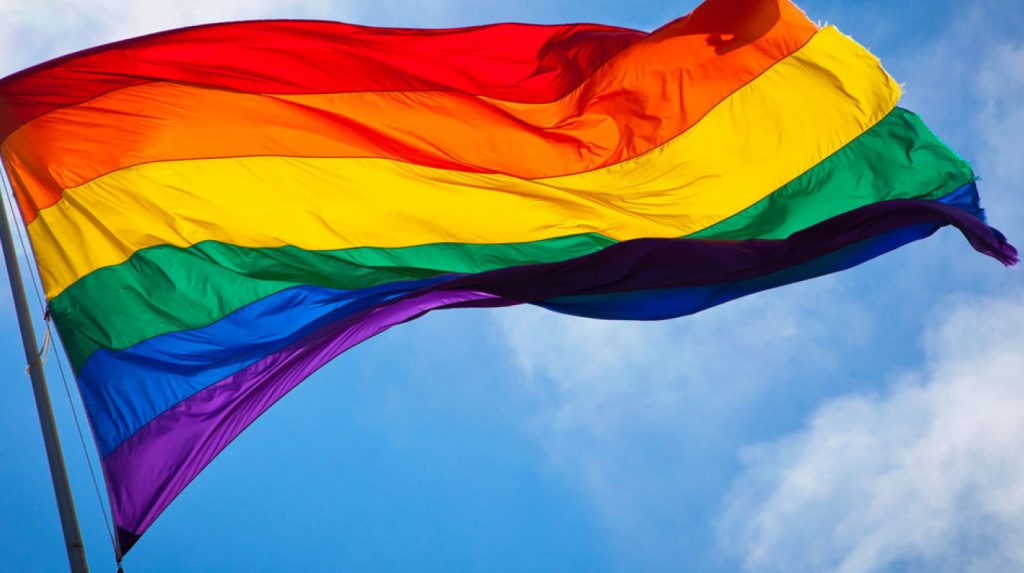Why Kikuyu elders brought down LGBTQ flag from Mt Kenya
By Sandra.Wekesa, May 10, 2023Last month, a group of Kikuyu traditionalists shot seven arrows, burned a flag representing the Lesbian, Gay, Bisexual, Transgender, Intersex, Queer/Questioning (LGBTQ) community and had the ashes thrown in a river.
This was part of a cleansing ceremony performed by the group, under the banner of Booi wa Kirira Kia Mugikuyu.
The LGBTQ flag was reportedly hoisted at the peak of Mt Kenya in 2019.
Although David Muthoga, Vice Chairperson of the Kikuyu Council of Elders could not go into details of the ceremony as he claimed this goes against traditions, he revealed that it involved slaughtering a lamb and chasing the evils spirits symbolised by shooting of seven arrows, while chanting prayers to Mwene Nyaga (Kikuyu deity) to forgive the community for provoking him. The flag was set ablaze at Naromoru in Nyeri County and the ashes thrown into a river.
“There is no significance in the number of arrows shot. It could have been less or more. Also the specifications of the rituals are things we can’t put out in the open, but basically it was for the purpose of appealing to Mwenye Nyaga for him to heal our land,” Muthoga noted.
To the Kikuyu community, Mt Kenya, known as Kirinyaga, is the seat of God, or Ngai or Mwene Nyaga. According to legend, Ngai created Kirinyaga (Mt Kenya), as an earthly dwelling place from which to survey his creation and bestows blessings and punishment upon his people. He granted Gikuyu, the father of the Agikuyu, a share of the rich land below the mountain. Ngai instructed Gikuyu that if he was ever in need, he should make a sacrifice and raise his hands towards Kirinyaga, and Mwene Nyaga would come to his aid. It’s no wonder the Kikuyu’s hold the mountain in high regard.
The Kikuyu elder says the LGBTQ flag had the effect of desecrating the community’s holiest shrine.
“It’s a taboo to have sex with people of the same gender. It’s never practiced in the Kikuyu community,” he says.
Spiritual significance
So, why did the LGBTQ community choose Mt Kenya?
“It is the highest point of our land. The mark of our Republic and that’s why Kenya’s flag was hoisted there during independence. To house their flag at the mountain is a way of telling us that they have conquered Kenya as a whole,” Muthoga says.
From a spiritual point of view, mountain(s) are considered to be government, authority, rulership, principalities, dominion and a place, or position of influence. Mountains play a theophanic role in the Bible — it is where important things happen, particularly theophanies (the appearance of God or the manifestation of deity in perceivable form).
According to Jewish scholar Jon Levenson, mountains in the Bible are like an archetype, a mould into which new experiences could be fit hundreds of years after the original event. Think of Abraham, Noah, Moses, Aaron, Elijah, Ezekiel, and Zechariah and the various mountains associated with them: Mt Zion, Mt Sinai, Mt Tabor, Mt of Olives, Mt Hor, Mt Moriah, Mt Ararat, Mt Nebo, and Mt Carmel. All of these figures had a transformative encounter with the transcendent God on a mountaintop. Whether it was a vision, a covenant promise, a transfiguration — encounters with God happened in landscapes that were not domesticated.
Perhaps this explains why the Agikuyu, inhabiting areas around the highest point in Kenya’s land, where caves that served as altars of prayer to Mwene Nyaga exist, are sometimes hailed as “the Jews of Kenya”.
That the LGBTQ community planted their flag at Kenya’s highest point, this has also had a significance in the spiritual realm, which could have contributed to the community being relatively accepted such as the recent ruling by Kenya’s Supreme Court allowing registration of LGBTQ associations.
“It’s unacceptable for sinners and people who are cursed by our ancestors to hoist their flag at a place where we believe is a shrine. This is not just at Mt Kenya, but even any other mountain; it is an abomination,” says the elder.
To Muthoga, sacred places of worship need to be scrutinised because there could be deeper connections to what is happening currently in the country.
“We did cleansing because we need to preserve the sanctity of Mt Kenya, but if this has taken that long (five years) to be notified of the flag’s existence, then there could be more alien things that have been planted in these sacred places and that is why scrutiny is important,” he says.
Respect sacred landmarks
On his part, Dr Stephen Asatsa, a lecturer of psychology at the Catholic University of Eastern Africa, says it is understandable that people may feel hesitant to associate Mt Kenya, a national symbol and important cultural landmark, with a controversial issue such as LGBTQ+ rights.
He adds that the relationship between the LGBTQ+ community and places of worship can be complex and varies greatly depending on the specific religion, denomination and cultural context. While some religious traditions and communities are more accepting of LGBTQ+ individuals and their rights, others may hold more conservative or traditional views that view homosexuality as a sin or violation of religious doctrine.
“In general, it is important to respect the beliefs and practices of different communities and to recognise that their sacred places of worship are often deeply meaningful and significant to their members.
“Associating the LGBTQ+ community with these spaces without proper understanding or sensitivity could be seen as disrespectful or even sacrilegious by some,” he says.
